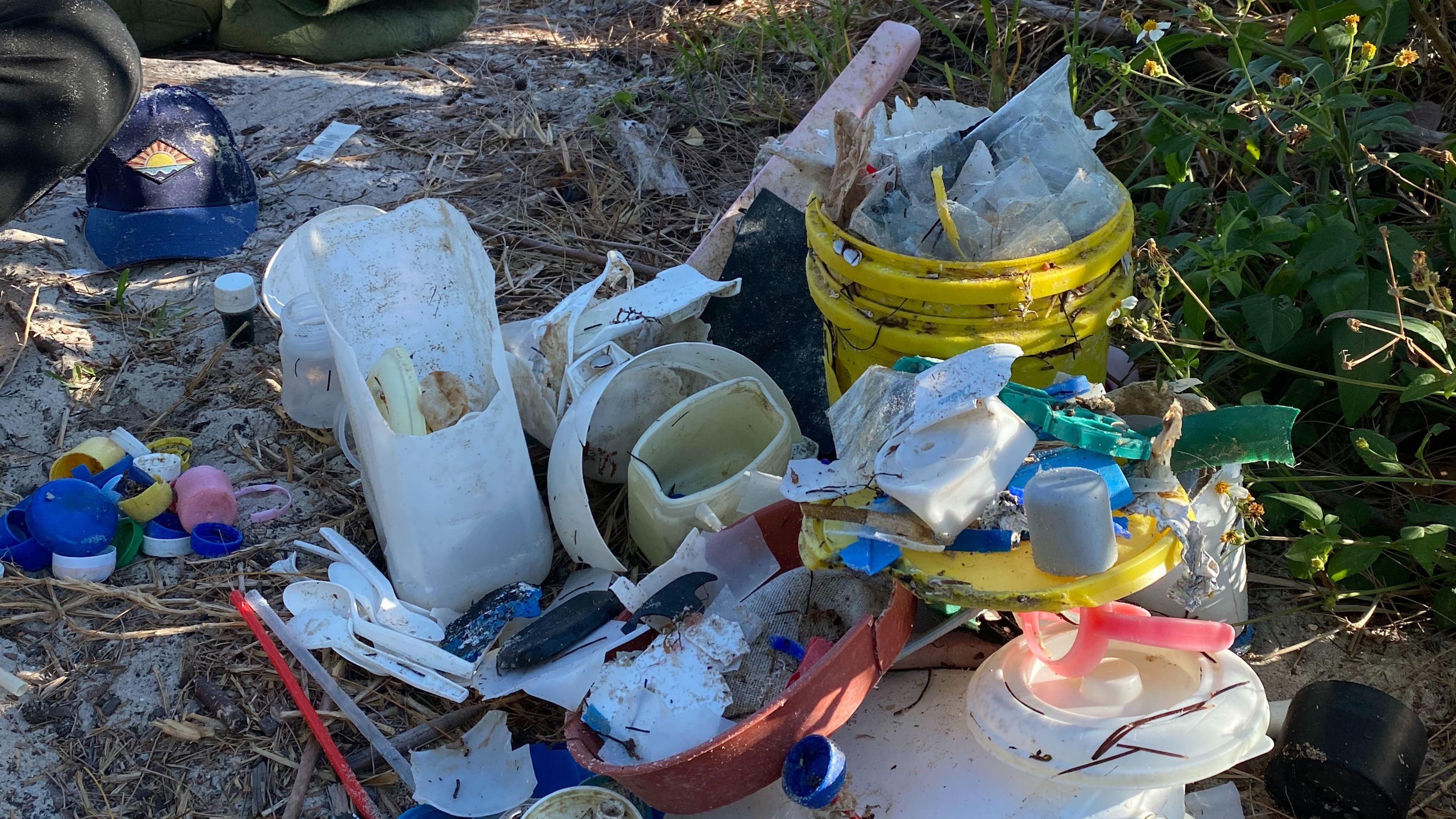
Nothing ruins the experience of going to the beach more than setting out your towel and laying down to relax, only to look around and see that you are surrounded by bottle caps, cigarette butts and other trash. Much of that trash – collectively known as marine debris – eventually makes its way into the ocean, where unsuspecting animals mistake it for a tasty treat or get tangled up in it.
The Frost Science Conservation team has been cleaning up marine debris on local beaches for almost a decade. Our Museum Volunteers for the Environment (MUVE) program hosts an annual event to mark September’s International Coastal Cleanup, a one-day global volunteer effort to clean up trash in our oceans and waterways. Nearly 50 MUVE volunteers collected 114 pounds of trash at our 2023 event, held on September 16 at Virginia Key North Point. MUVE’s event was one of 58 area cleanup events for the International Coastal Cleanup, organized locally by Volunteercleanup.org.
In addition to the large September event, MUVE volunteers periodically assist with beach cleanups throughout the year. They document what they find with the Ocean Conservancy’s Clean Swell® app. Since 2020, MUVE volunteers have logged well over 17,000 individual pieces of trash in Clean Swell.
Cleaning up the beach is an important task, but mitigating marine debris for good will mean stopping trash at the source. A recent project by MUVE intern and University of Miami Master of Professional Science student Gianna Glass has shed new light on how to do this on the beaches of Virginia Key and Key Biscayne.

With the help of volunteer surveyors, Glass collected marine debris at two beach sites, Virginia Key North Point and Bill Baggs Cape Florida State Park, once per week for 12 weeks. She and the surveyors collected as much trash as they could in a 15-minute span. Then, they measured and identified each piece. The work was tedious, but very important for understanding what kind of trash is on our beaches, where it might be coming from, and how to stop it.
Over the entire project period, Glass and her team collected 5,835 pieces of marine debris from the two beaches. Hard plastic items like soda bottle caps were the most common type of material at both beaches. However, the marine debris at Bill Baggs included more paper receipts, cigarette butts and metal bottle caps – items likely originating from beach visitors that could potentially be captured if trash cans were more abundant on the beach. Plastic items collected from Virginia Key, on the other hand, often appeared weathered and worn-down. In some cases, goose barnacles and other marine life had grown on the debris, indicating it had floated in the water for some time before washing up on the sand. It will take more research to figure out where that trash is coming from.
While there is still much work to do to ensure you don’t come face-to-face with someone else’s trash next time you hit the sand, we at Frost Science are doing our best to make Miami’s treasured beaches trash-free. You can help us out by collecting trash from the beach on your future visits and reducing the amount of waste you produce. You can also sign up for MUVE news and register for the next beach cleanup here.